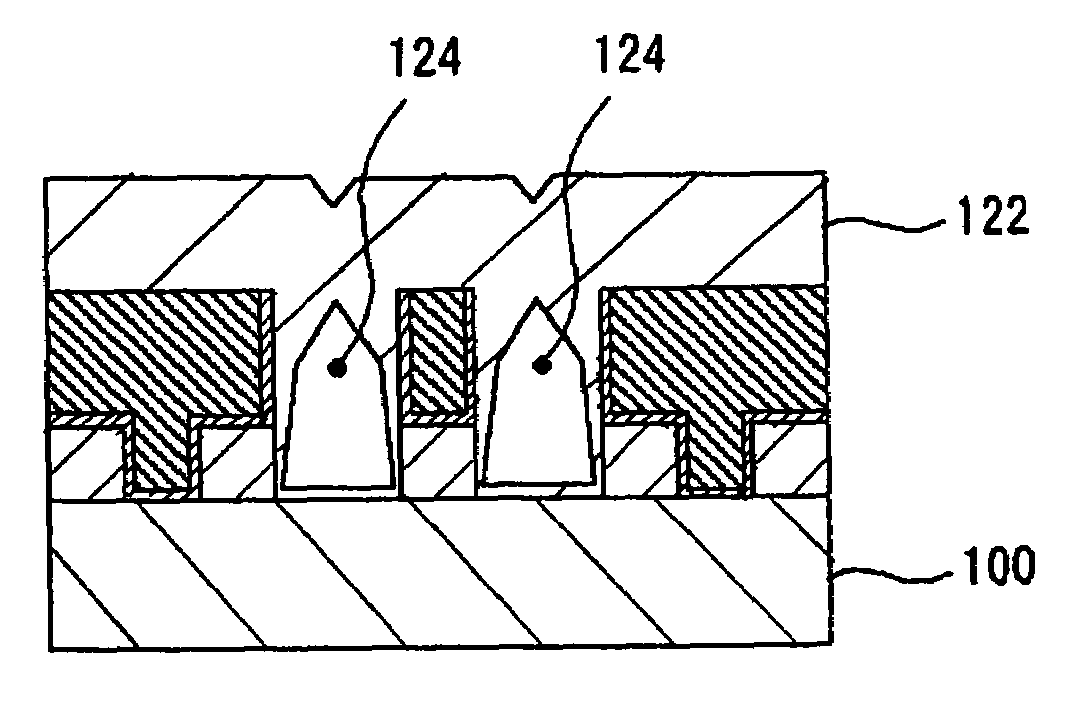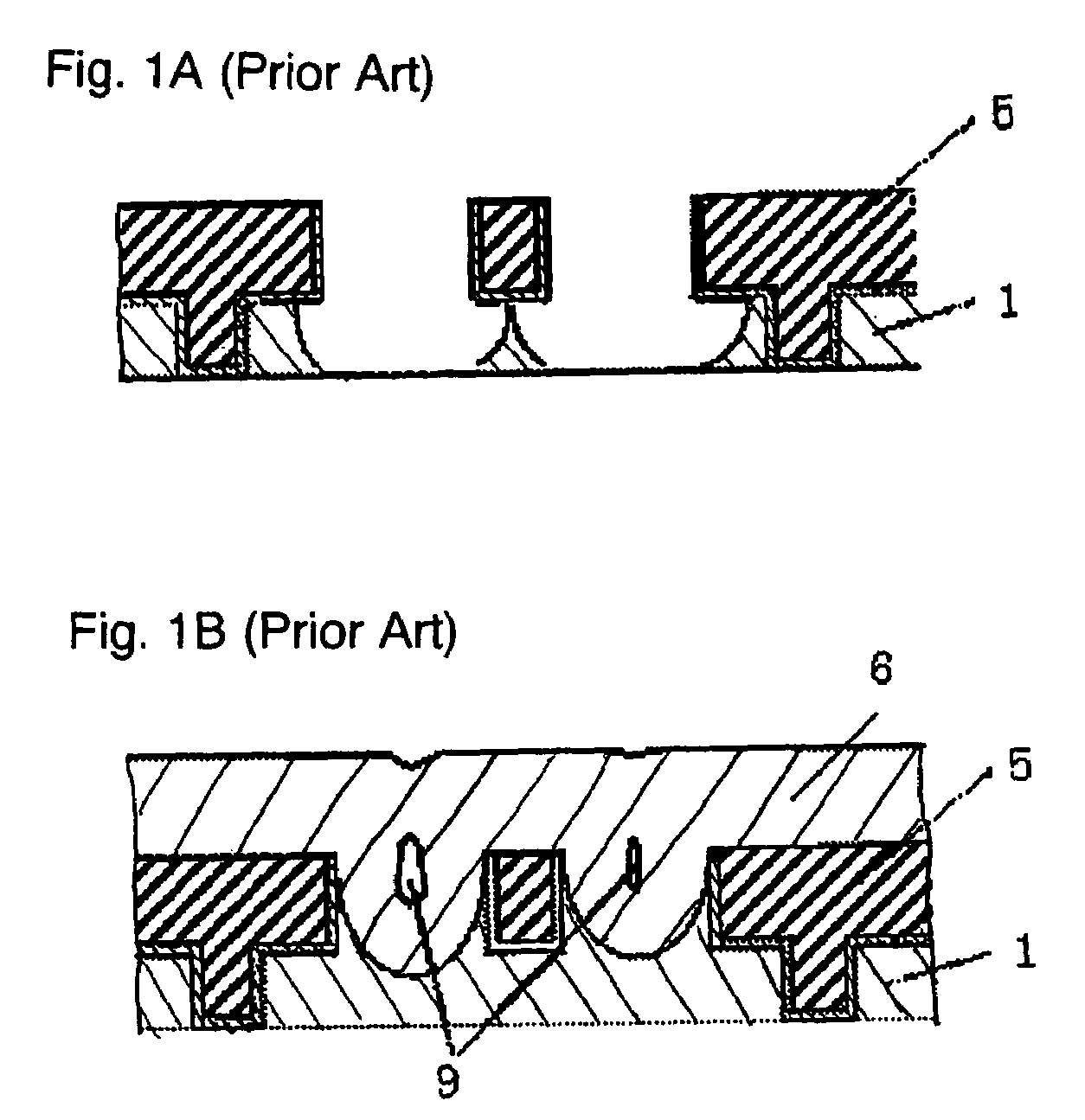Manufacturing of a semiconductor device with a reduced capacitance between wirings
a manufacturing method and technology of semiconductor devices, applied in semiconductor devices, semiconductor/solid-state device details, electrical apparatus, etc., can solve the problems of difficult control of shape after etching, damage to wirings, and significant increase in process number, so as to reduce the capacitance between wirings , the effect of uniform air gaps
- Summary
- Abstract
- Description
- Claims
- Application Information
AI Technical Summary
Benefits of technology
Problems solved by technology
Method used
Image
Examples
first embodiment
[0041]FIGS. 2A to 4B are schematic cross-sectional views illustrating the steps of a method of manufacturing a semiconductor device according to the first embodiment of the present invention. The steps of forming a multi-layered wiring structure by the dual damascene method are described below.
[0042]Firstly, on a semiconductor substrate 100, a first insulating film 102 (for example, with a thickness of 800 nm) is formed. The first insulating film 102, for example, may be made of a silicon oxide film. It is also possible for the first insulating film 102 to be composed of what is called a low-dielectric-constant material.
[0043]As a low-dielectric-constant material, various materials may be utilized and it is preferable to contain a ladder oxide such as a ladder hydrogenated siloxane therein. The ladder hydrogenated siloxane is a polymer with the ladder molecular structure, and preferably has a dielectric constant of 2.9 or less from the viewpoint of the wiring delay suppression. Pref...
second embodiment
[0057]FIGS. 5A to 5C are schematic cross-sectional views illustrating a part of the steps of a method of manufacturing a semiconductor device according to the second embodiment of the present invention.
[0058]In the present embodiment, too, wirings 118, via plugs 119, and sacrifice films 112 are formed by the same method as described in the first embodiment with reference to FIGS. 2A to 3E. After that, as in the first embodiment, the sacrifice films 112 are selectively removed, for example, by selective wet etching with hydrazine, whereby, extending over the layer where the via plugs 119 are formed and the layer having the wirings 118 formed thereon, second trenches (same as the second trenches to form air gaps in the first embodiment) 120 whose sidewalls are generally perpendicular to the bottom face of the first trenches (same as the first trenches to form air gaps in the first embodiment) 106 (see FIGS. 2A to 2C) are formed (see FIG. 5A).
[0059]In the present embodiment, a third in...
PUM
 Login to View More
Login to View More Abstract
Description
Claims
Application Information
 Login to View More
Login to View More - R&D
- Intellectual Property
- Life Sciences
- Materials
- Tech Scout
- Unparalleled Data Quality
- Higher Quality Content
- 60% Fewer Hallucinations
Browse by: Latest US Patents, China's latest patents, Technical Efficacy Thesaurus, Application Domain, Technology Topic, Popular Technical Reports.
© 2025 PatSnap. All rights reserved.Legal|Privacy policy|Modern Slavery Act Transparency Statement|Sitemap|About US| Contact US: help@patsnap.com



